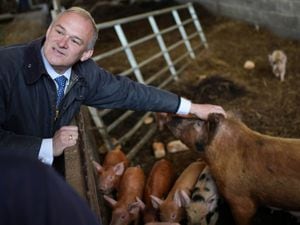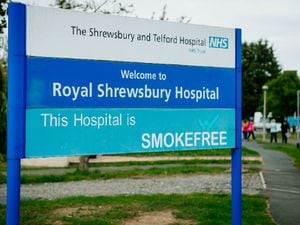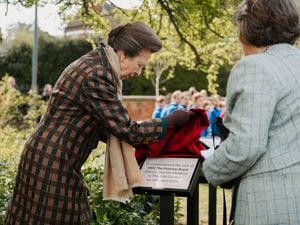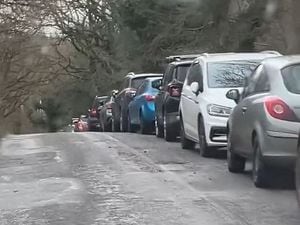Motor magnate's home clocks up century of family memories
With 100 years on the clock as the family home of a Manchester motor magnate, it's not surprising that Combermere Abbey on the Shropshire border has needed a thorough overhaul.
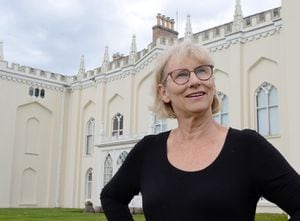
Restoring a revered classic doesn't come cheap – the bill has been around £5 million. But now the property and estate is in full running order as it faces the challenges of the 21st century.
It was in 1919 that Sir Kenneth Crossley, boss of the Gorton-based car maker Crossley Motors, bought the historic estate near Whitchurch as he looked for a home in the country.
For a full century it has stayed in the family, being owned now by his great-granddaughter Mrs Sarah Callander Beckett, who has revamped ailing buildings and given them new life and purpose in what has been a labour of love.
And Combermere Abbey is celebrating its centenary in style, with various special events and special products, and raising money for a charity co-founded by Sir William Crossley in 1880. Originally called the Manchester and Salford Boys and Girls Welfare Society, it is now called Together Trust.
It offers care, support and special education to children, adults and families, including those with behavioural problems, learning problems, and disabilities, and Combermere's centenary fundraising target is £10,000.
Sarah was brought up at Combermere from the age of seven until her late teens, when she moved to London, in a career which was to take her ultimately to America as the PR director for Laura Ashley there.
"My mother, Mrs Penelope Bostock, nee Crossley, who is 91 now, was looking to hand over the estate. I'm the oldest of three daughters and came here to take on Combermere in 1992," she said.
"One of the reasons I wanted to do it was because while I had been working in America I had been exposed to a very positive approach to work. I think the Americas are a very positive group of people.
"They always look on the up side of things. They have a can-do attitude. I suppose some of that had rubbed off. Also, I felt my experience could bring fresh things to the estate and also I could bring a wider degree of commercial experience. I felt it needed new energy.
"It was a private estate, almost never opened to the public, the family home for my mother and stepfather, and with a very good dairy farm.
"It was all falling down. There are seven listed buildings. They were all in a state of disrepair of various degrees, some worse than others."
The transformation has been a step-by-step approach, giving each structure a reason-to-be. It started by turning the stable building into holiday cottages, which then led to the restoration of the walled gardens behind them as a space for guests.
Restoring the main house with its layers of history involved three different phases, in which those layers were in effect peeled off to be repaired. The core is a 12th century Cistercian monastery, then it became a Tudor manor, and in 1820 it was overlaid in Gothic style by Viscount Combermere.
Along with dry rot and death watch beetle, they found a 17th century woman's shoe and an 18th century bottle.
The revamp of the estate has turned it into a tourism, weddings, and events venue, together with a business park – managed by Sarah's husband Peter whom she married the year after taking over Combermere – and organic farm. There's even a solar park tucked away, creating enough electricity for 3,000 houses.
The family live in part of the main house.
"When I came here nobody came on holiday to South Cheshire or North Shropshire. You went through the area to get to your holiday destination. Creating a holiday destination here was quite an interesting challenge."
As for the 100 years celebrations, there's a centenary jam made from fruit from the estate's fruit tree maze – "it's a plum jam, with damson gin, very delicious" – and centenary honey, from the 38 hives.
The estate is open to the public by arrangement 40 days a year, and the gardens five times a year. There's a gardens open day on June 25 under the National Garden Scheme, on September 22 there will be a vintage and classic car owners meeting, and top interior designer Nina Campbell is giving a lecture at a charity lunch on October 22.
Sir Kenneth came to Combermere just after the Great War and would fly to the Gorton works from a field which at the time was part of the estate.
"He loved living here. Very sadly for him he lost his son in an aircraft accident just before World War Two, Anthony Crossley, who would have inherited. The plane crashed in the sea in the harbour in Copenhagen in early August 1939. It was very tragic.
"And then he lost his grandson Francis Crossley, who was my uncle, to polio in 1953.
"As a result of losing two direct heirs, the estate was left to my mother and her sister, who were the remaining grandchildren. My late aunt, my mother's sister, was Teresa."
During the Second World War Combermere became a girls' school, St Helena's, evacuated from Eastbourne.
"The curious thing about it was that there was a boy, and the reason for that was he was the son of the maths teacher.
"When we opened my holiday cottages I had people who came to stay who had been pupils here. I had four or five of them, which has been amazing.
"One of the schoolchildren who came to stay was, with her twin sister, an evacuee from Germany. She was obviously a mathematical prodigy because she became the maths teacher at 15. We still email each other. She lives in Portland, Oregon."
That former pupil Marion Walter, a Jewish kindertransport refugee, is now in her 90s.
"My great-grandfather died in 1957. I was five years old when he died. I'm sure somewhere I have a memory of him. He spent an enormous amount of time on his tractors – he loved his tractors. My mother, who also grew up here for a large amount of her youth, remembers him very well. He loved being out on his farm."
Sarah does not have a picture of Sir Kenneth with a Crossley car, but the estate rather naturally uses a Crossley as its wedding car.
"It's a Crossley saloon, a 2.9 from 1927. I purchased it about four years ago. They're beautiful cars. Of their day they were one of the most fabulous cars around. It's very well built and surprisingly quick."
Sarah added: "I think it's a great honour to be able to celebrate the fact that the family has stayed here for this long. Staying here 100 years is miraculous. I think what's happened in the last 25 years has given this estate a platform to continue to exist for a long time."

